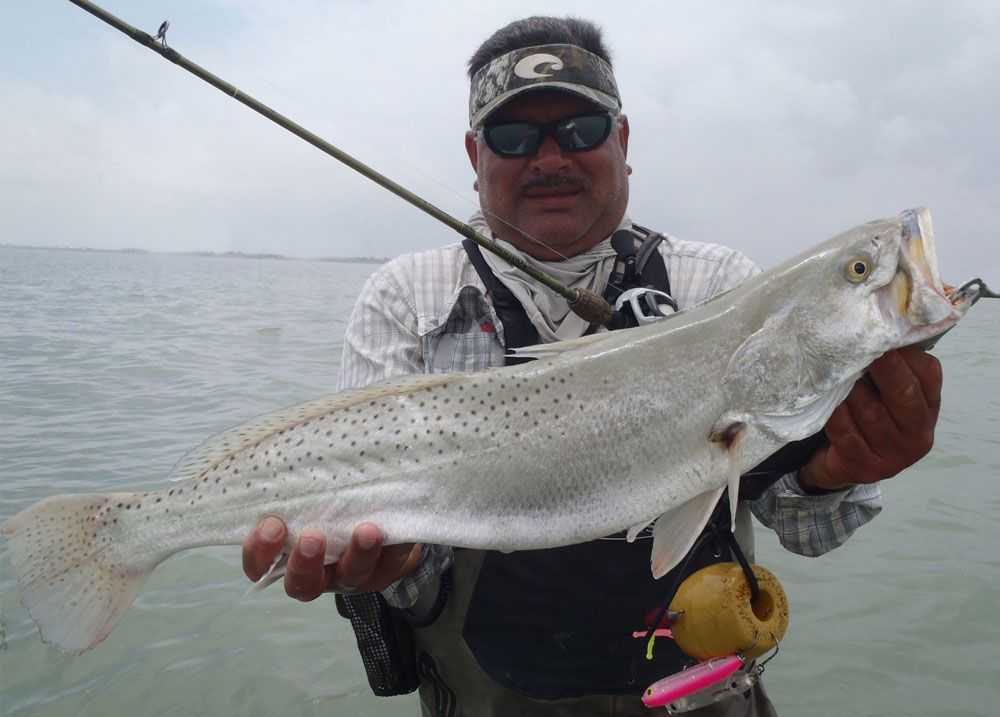
Tobin Strickland CAM Special Correspondent
November and early December have a lot of options for speckled trout and redfish. The fall’s bulging bull tides are now being pulled out of the marshes and with it all the shrimp and juvenile baitfish get drawn out of mangroves, marsh, and shallow grass flats.
This condition will pull a lot of the redfish out of the back marsh ponds and onto the main bay shorelines. It pulls so much bait into the bay that the schools of trout begin pushing pods of shrimp to the surface, and the gulls and terns will feed on the shrimp and shad being pushed to the surface. They are not hard to find; sometimes the hard part is finding game fish, or even legal size trout, under the birds. For this reason I tend to ignore ‘working birds’ out in the main bay. It is very fun, though, and if you haven’t had done it, or know some kids that don’t get to fish much, I highly recommend taking them and fishing the birds.
For larger fish, it’s a much better option to work the shoreline grass and oysters for trout and redfish, and that’s what Capt. Ernest Cisneros will be doing in the Lower Laguna near Port Isabel, Texas. Capt. Cisneros will hunt tailing redfish, throwing Spook Juniors, Mirrolure She-Pups, and Kelly Wiggler Ball Tail Shad in knee- to thigh-deep grass flats with mud bottoms. The mud bottoms hold the shrimp longer. The shrimp burrow into the soft mud, and the reds will find more in those areas. Along with the shrimp, crabs burrow into the mud, as well as marine worms and other benthic organisms. It’s a very healthy, and important part of the coastal ecosystem. In the winter, the nutrient-rich mud also tends to grow more algae as well as remain slightly warmer. This in turn will bring in baitfish such as mullet, and the trout and reds will follow.
The lures that Cisneros uses will be mullet-imitation plugs, and with the prevalence of juvenile baitfish early in the fall, he’ll be throwing the smaller versions mentioned above. Later into December, when many of the juvenile baitfish have left the bay, he’ll begin throwing larger lures such as OneKnockers, SuperSpooks and She Dawgs. Colors will vary depending on the water conditions and how bright the day is. There is a general color theory rule that we all throw around which is Bright Day – Bright Bait; Dark Day – Dark Bait; Clear Water – Natural Color; Dirty Water – Un-Natural Color. Bones tend to work in a lot of water conditions and are usually a good place to start.
Tobin created the TroutSupport.com Intensive Training DVD’s which are unlike anything you’ve ever watched; they’re very long and full of fish finding on-the-water training.
[easy-social-share]